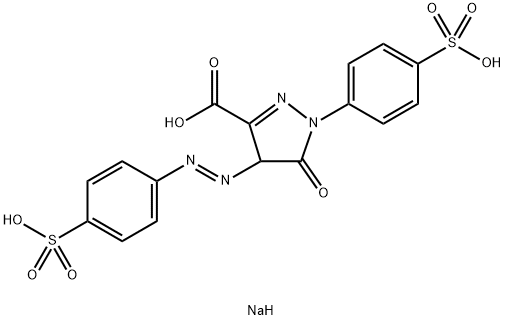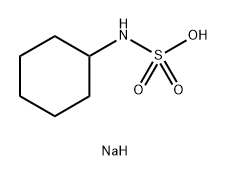PRODUCT Properties
| Melting point: | 300 °C |
| Boiling point: | 909.54℃[at 101 325 Pa] |
| Density | 2.121[at 20℃] |
| vapor pressure | 0Pa at 25℃ |
| storage temp. | room temp |
| solubility | DMSO (Sparingly, Heated), Water (Slightly) |
| Colour Index | 19140 |
| form | Powder |
| color | Orange |
| Water Solubility | 260 g/L (30 ºC) |
| Sensitive | Hygroscopic |
| Merck | 14,9072 |
| BRN | 69850 |
| Stability: | Stable. Hygroscopic. Incompatible with strong oxidizing agents. |
| Biological Applications | Treating hepatitis,periodontal disease,psoriasis |
| LogP | -1.572 at 20℃ |
| EPA Substance Registry System | Tartrazine (1934-21-0) |
Description and Uses
FD & C Yellow No. 5 is principally the trisodium salt of 4,5-dihydro-5-oxo-l-(4-sulfophenyl)-4-[4-sulfophenyl-azo]-lH- pyrazole-3-carboxylic acid.
The colorant is a yellow-orange powder that dissolves in water to give a solution golden yellow at neutrality and in acid. When dissolved in concentrated sulfuric acid, it yields an orange-yellow solution that turns yellow when diluted with water.
FD & C Yellow No. 5 is regularly used in desserts (e.g., dessert powders, puddings, custards, gelatin, ice cream), candy, preserves, beverages (including carbonated soda beverages and flavored drink powders), prepared meats, and canned and frozen vegetables. It is also used in pharmaceuticals and cosmetics.1
.
Tartrazine is used as a dye for wool and silks; as colorant in food, drugs, and cosmetics. In biochemistry as an adsorption-elution indicator for chloride estimations. Tartrazine (otherwise known as E number E102, C.I. 19140, or FD&C Yellow 5) is a synthetic lemon yellow azo dye used as a food coloring. Tartrazine appears to cause the most allergic and intolerance reactions of all the azo dyes, particularly among as thmatics and those with an aspirin intolerance.
Safety
| Symbol(GHS) |  GHS08 |
| Signal word | Danger |
| Hazard statements | H317-H334 |
| Precautionary statements | P261-P272-P280-P284-P302+P352+P333+P313+P363-P304+P340+P342+P311-P501-P280g-P304+P340-P342+P311a-P501a |
| Hazard Codes | Xn |
| Risk Statements | 42/43 |
| Safety Statements | 22-36/37-45-24/25 |
| WGK Germany | 1 |
| RTECS | UQ6400000 |
| TSCA | Yes |
| HS Code | 32129000 |
| Hazardous Substances Data | 1934-21-0(Hazardous Substances Data) |
| Toxicity | LD50 oral in mouse: 12750mg/kg |



